Can You Spray Paint Copper Pipes? (With 1 Big Consideration!)
Copper pipes are commonly used for both practical applications such as plumbing as well as decorative applications such as industrial lighting or shelving. Depending on where the copper pipes are being used, you might wonder if you can spray paint copper pipes to hide them or otherwise help them fit into the look you desire for the space.
Should you paint copper pipes at all?
It is easy to spray paint copper pipes provided that they are clean and free of oxidative build up and you can achieve almost any kind of texture and finish that you need. However, copper pipes used in plumbing applications are likely to sweat with condensation, potentially negatively impacting the durability of the paint.
Before you start, it’s essential to prepare the copper pipes by cleaning and sanding them to ensure a smooth, even surface that allows the paint to adhere properly. Additionally, choosing the right type of spray paint is important, as some paints may not adhere well to copper or could wear off more quickly.
Will spray paint stick to copper pipes?
Can you spray paint copper pipes?
Yes, spray paint can stick to copper pipes.
But, copper pipes used in plumbing that frequently carry cold water will have issues with condensation that will likely cause problems with paint sticking over time.
Let’s look at why you might want to paint copper pipes and what kind of paint goes on copper.
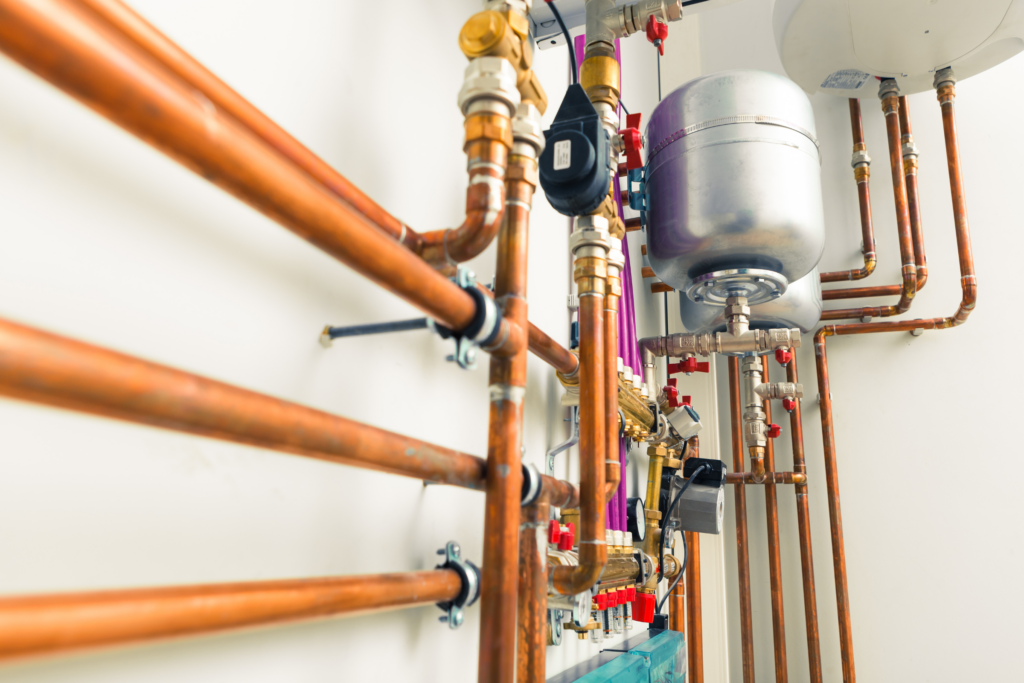
Why would you ever need to paint copper pipes?
There are a few reasons why you might want to paint copper pipes:
- Aesthetics: Painting copper pipes can help them blend in with the surrounding environment, especially if they are exposed and stand out from the wall or ceiling. By color-matching the paint to your room’s décor, you can create a more visually appealing space.
- Corrosion protection: Although copper is naturally resistant to corrosion, applying a coat of paint can offer extra protection against environmental factors that could cause tarnishing or oxidization.
- Heat resistance: In some cases, painting copper pipes can help reduce heat transfer, which may be beneficial if the pipes carry hot water or steam.
To paint copper pipes, follow these steps:
- Clean and degrease: Remove any dirt, grease, or other contaminants from the pipe’s surface using a mild detergent or degreasing agent. Wipe the pipe dry with a clean cloth.
- Sand the surface: Lightly sand the surface of the copper pipe with fine-grit sandpaper (120- to 180-grit) to create a rough texture for the paint to adhere to. Be sure to remove any leftover dust with a damp cloth.
- Prime: Apply a metal primer formulated for use on copper surfaces. This step is crucial, as it will help the paint adhere better and provide increased protection against corrosion.
- Paint: Apply the spray paint in thin, even coats, allowing each coat to dry before applying the next one. Be sure to use a paint that is suitable for metal surfaces and follow the manufacturer’s instructions for application and drying times.
By following these steps, you can ensure that the spray paint will adhere well to your copper pipes and provide the desired appearance or protection.
Choosing the right paint for copper pipes
When painting your copper pipes, it’s essential to choose the right type of paint and primer. The paint should adhere well to the copper surface, provide proper coverage, and protect the pipes from corrosion.
Let’s take a look at the best spray paint for copper pipe depending on the application.
Use Oil-based paints to spray paint copper pipes used in plumbing
If you know that your copper pipes will be subjected to the elements or condensation, it is best to use an oil-based paint.
Oil-based paints, such as enamel and lacquer, are popular choices due to their durability and compatibility with metal surfaces. Enamel paint offers a glossy finish and long-lasting protection, while lacquer provides a high-gloss finish with a harder surface. Oil-based paint generally takes longer to dry, but tends to yield better results.
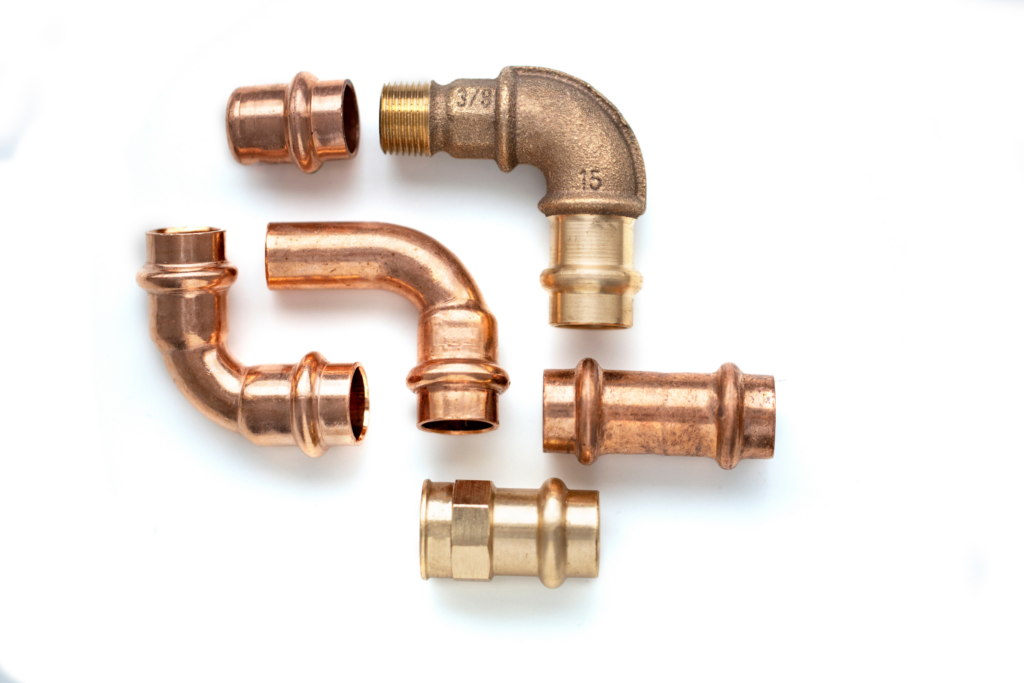
Use acrylic paints to spray paint copper pipes used as decorations
If you are painting copper pipes that are used decoratively, it is best to use acrylic-based paints because they are easier to use, make less mess, and come in a wider-variety of colors.
Acrylic paints are another option and are water-based rather than oil-based. This type of paint is easier to clean up and dries more quickly but may not be as durable on copper pipes. Acrylic paint also tends to have a lower gloss finish, which may be more visually appealing in certain applications.

Do you need to prepare copper pipes for spray painting?
Yes, preparing copper pipes for spray painting is an essential step to ensure a smooth and lasting finish. Proper preparation includes cleaning the pipes and sanding them if necessary to make sure that you are painting the surface of the metal itself.
Cleaning copper pipes
To clean your copper pipes, follow these steps:
- Remove any debris, dust, or dirt from the surface of the pipes. You can use a brush or a cloth to wipe away any loose particles.
- Mix warm water and soap in a bucket. Dip a soft cloth or sponge into the soapy water, then gently scrub the pipes to clean them thoroughly. Be sure to remove any grease, oil, or stubborn dirt that may be present.
- For more difficult stains or tarnish, create a cleaning solution by combining equal parts vinegar and salt. Apply this mixture to the pipes with a cloth or sponge, then scrub gently to remove the stains.
- After cleaning the pipes, rinse them with clean water to remove any soap residue or cleaning solution. Be sure to dry them thoroughly to prevent moisture from causing rust or other issues during the painting process.
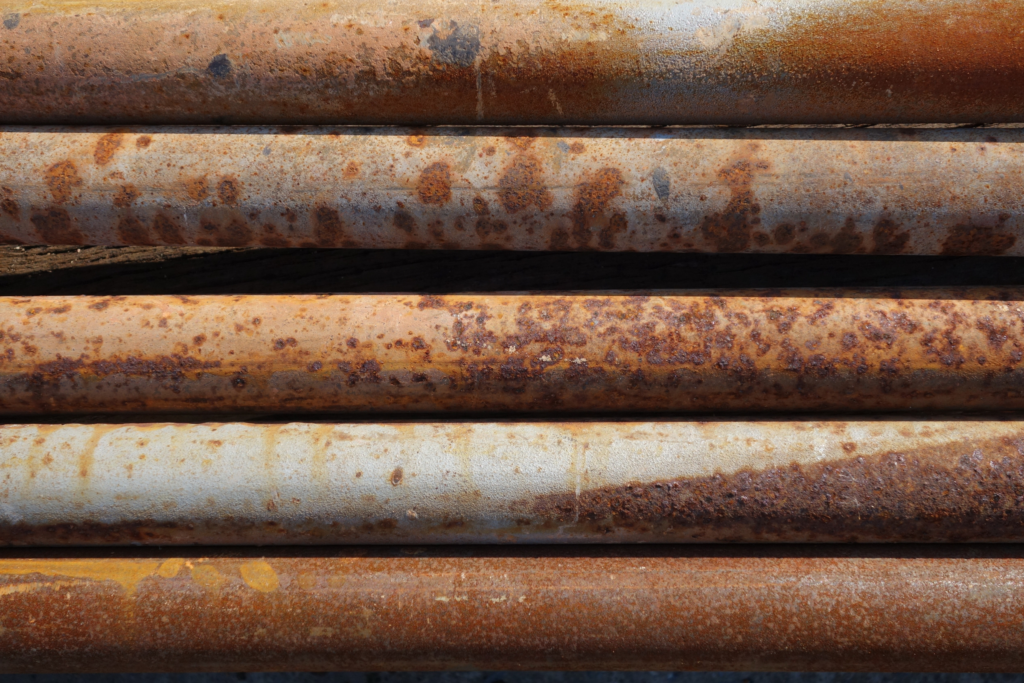
Should you sand copper pipes before painting?
Sanding is recommended for some metal surfaces before painting, but it may not be necessary for copper pipes. However, if you notice any rough areas, imperfections, or existing paint, it would be best to sand those spots lightly to create a smooth and even surface.
To sand your copper pipes, follow these steps:
- Choose an appropriate grit sandpaper, such as 220-grit, to smooth down any rough areas. Be sure not to use too coarse of a grit, as it could damage the copper surface.
- Gently sand the affected areas on the pipes until they are smooth and free of imperfections.
- After sanding, be sure to wipe away any sanding debris before proceeding to paint.
Once your copper pipes are clean and sanded, you can apply a primer designed for metal surfaces, followed by the spray paint of your choice. This preparation will help to ensure adhesion and further protect the pipes from rust, moisture, and other potential issues related to plumbing and usage.
How to paint copper pipes with spray paint
Before you begin spray painting your copper pipes, make sure you’re in a well-ventilated area and have the necessary personal protective equipment (PPE) such as gloves, a mask, and safety goggles. This will help ensure your safety during the process.
Before applying the paint, cover any nearby surfaces with paper or plastic sheeting to protect them from overspray. Shake the can of spray paint thoroughly to ensure proper mixing of the pigments and solvents, and test on a piece of scrap material to check the flow, color, and coverage.
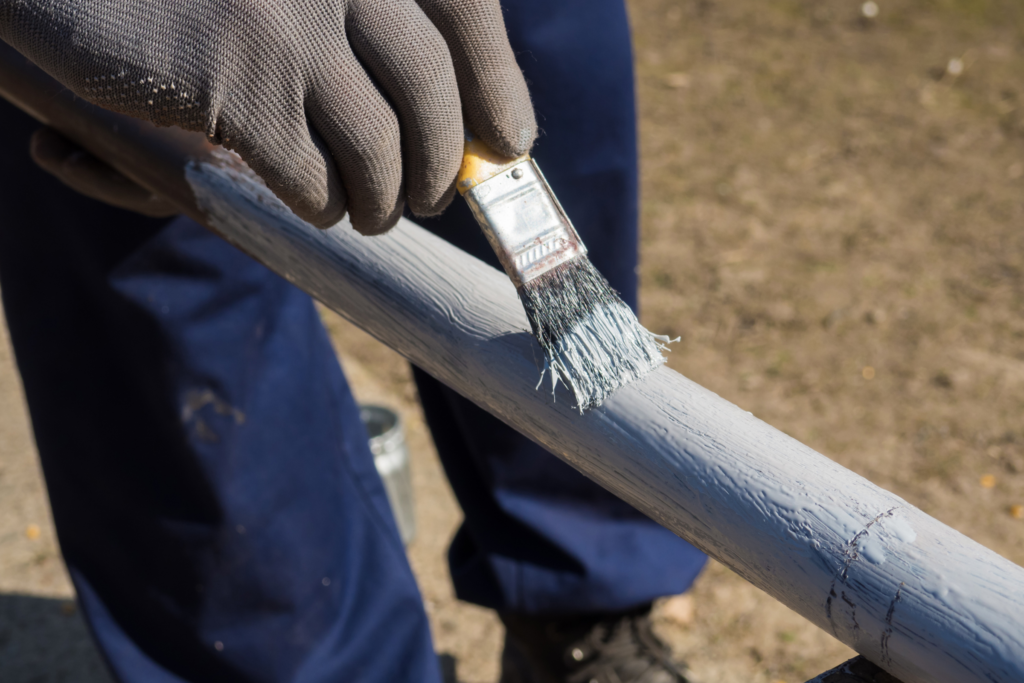
Hold the spray can about 12-16 inches away from the copper pipe and apply a thin, even coat, moving in a back-and-forth motion. Apply multiple coats if necessary, allowing each coat to dry per the manufacturer’s instructions. This will help build a durable and even protective layer on your copper pipes.
Remember that the quality of copper spray paint varies, so consider using a reputable brand like Rustoleum to ensure optimal results. Choosing a high-quality paint will ensure better adhesion, coverage, and lasting results.
Following these steps while maintaining a confident, knowledgeable, and clear approach will help you achieve a professional, polished look when spray painting your copper pipes.
Safety considerations when painting copper pipes
When embarking on a DIY project to paint copper pipes, it’s essential to prioritize safety. Painting copper pipes involves handling potentially hazardous materials and working with metal surfaces, so taking necessary precautions is crucial.
Before starting, gather the appropriate personal protective equipment (PPE) to ensure your safety throughout the project. This includes wearing gloves, safety goggles, and a mask to protect yourself from harmful fumes and accidental contact with paint or mineral spirits.
While painting, ensure the area is well-ventilated to minimize the inhalation of paint fumes. You can accomplish this by opening windows and doors or using an exhaust fan. Maintain a steady, even pressure when spraying the paint, and avoid holding the spray nozzle too close to the copper pipes, as this can result in an uneven application.
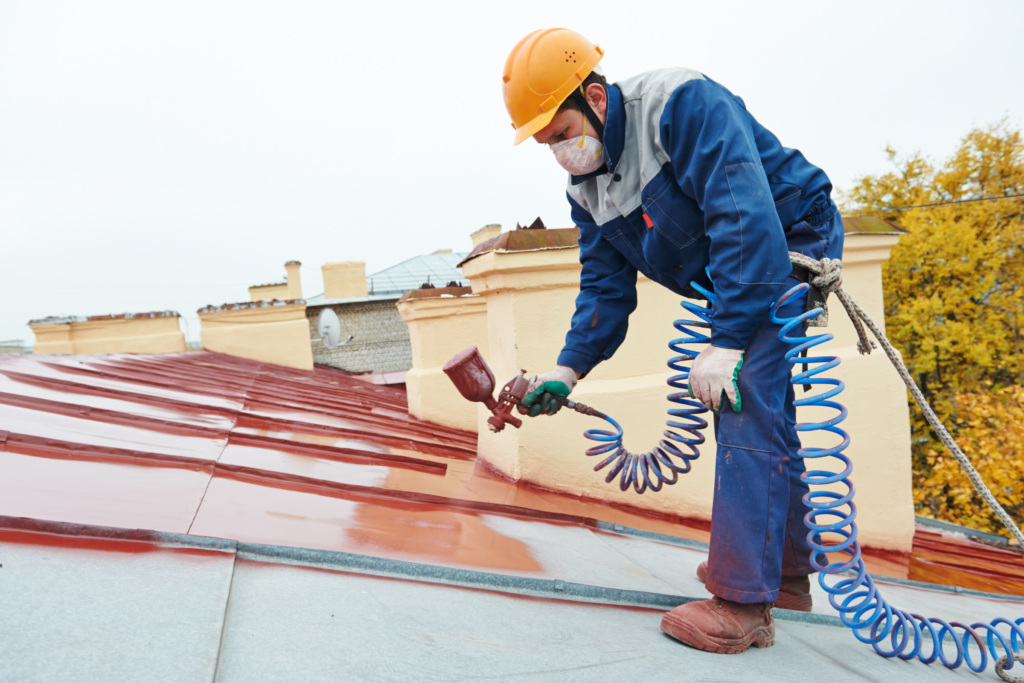
How to maintain painted copper pipes
Taking proper care of your painted copper pipes will help extend their lifespan and protect them from common issues such as rust and corrosion.
First, you should regularly inspect the pipes for any signs of paint peeling, cracking, or other issues, especially those exposed to the elements. When dealing with painted copper pipes, immediate action helps in preventing further damage because you can quickly fix the imperfection before it gets worse.
In case you notice any issues, follow the steps outlined above to fix the problem and maintain the integrity of your copper pipes.
Spray painting copper pipes – key takeaways
- Spray painting copper pipes is possible and can improve their appearance or protect them from corrosion.
- Proper preparation, such as cleaning and sanding, is crucial for paint adhesion and durability.
- Selecting the appropriate spray paint type ensures a successful application and long-lasting results.
Frequently Asked Questions about spray painting copper pipes
What type of spray paint works best on copper pipes?
For copper pipes, it’s recommended to use a spray paint specifically designed for metals, such as acrylic enamel or epoxy. These types of paint provide excellent coverage, durability, and resistance to corrosion. You can also look for a product that is specifically formulated for use on copper material.
How to properly prepare copper pipes for spray painting?
To ensure the best results, follow these steps when preparing your copper pipes for painting:
1. Clean the surface with a cloth or sponge to remove any dirt, grease, or other debris. You can use a mild detergent solution if necessary.
2. Rinse the pipes thoroughly with water and let them dry completely.
3. Lightly sand the surface of the copper pipes with fine-grit sandpaper to create a slightly roughened surface for better paint adhesion.
4. Wipe off any dust or debris remaining after sanding with a clean, dry cloth.
Is it necessary to prime copper pipes before spray painting?
It is not always necessary to use a primer before spray painting copper pipes. However, using a metal primer specifically designed for copper surfaces can improve adhesion and provide a more uniform finish. Priming the pipes also helps prevent the formation of oxidation, which can lead to discoloration and corrosion over time.
What precautions to take when painting outdoor copper pipes?
When painting copper pipes outside, make sure to choose a spray paint that is weather-resistant and durable. Also, consider applying a clear coat or sealer after painting to provide additional protection against the elements.
Can you paint copper water and heating pipes?
Yes, you can spray paint water and heating pipes made out of copper, but it is essential to choose a paint that can withstand high temperatures if the pipes become hot during use. Be sure to follow all safety guidelines and recommendations provided by the paint manufacturer.
Let Us Know How We’re Doing!
Did this expertly prepared resource answer your question?
Do you have another question about home maintenance, home improvement projects, home appliance repair, or something else?
Get more information, send in questions and keep the discussion going by contacting the I’ll Just Fix It Myself company customer service team at at 1-800-928-1490 or Email us at [email protected]
